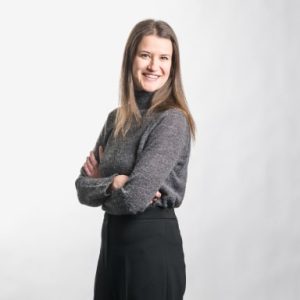What’s a company’s most-prized asset?
Is it abundant financial resources, a high-rise office in an upmarket area, or having the latest high-tech equipment?
Nope.
It’s the human resource, the people.
That’s why smart companies prioritize corporate wellness. If you are interested in the well-being of your employees, it means you see the value of corporate wellness for your business. For example, if your corporate employees are under a lot of stress or anxiety, stress management apps like Sensa App will help employees deal with it. You understand that everything in a business rises or falls with the health of its staff. Setting up an effective corporate wellness program is simple if you know what to focus on.
In this guide, we will define corporate wellness and show you how to measure it doing a corporate wellness assessment.
What is corporate wellness?
Corporate wellness, aka corporate well-being, is any organizational program designed to encourage and support healthy behavior among employees.
In the post-pandemic workplace corporate wellness is receiving even more attention than it already did before.
Brands are investing more in the all-inclusive health of their employees because, as the 2021 Employee Wellness Industry Trends Report showed, it’s vital to corporate and cultural success.
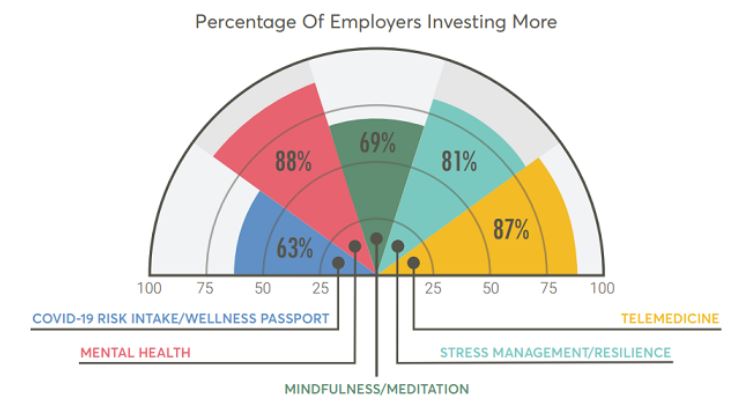
These are the percentages of the number of companies investing in wellness programs:
- Covid-19 Risk Intake 63%
- Mental Health 88%
- Mindfulness 69%
- Stress Management 81%
- Telemedicine 87%
As you can see, it’s safe to say companies know the value of corporate wellbeing. But to promote wellness, you must know how to measure it first.
Corporate wellness criteria
True wellness is holistic.
A solid wellness program covers many areas, including:
- Flexibility: the ability to adapt to new contexts and circumstances.
- Ergonomy: a person’s efficiency levels in their work environment.
- Team: working together harmoniously with fellow workers for a common goal.
- Emotional/Mental: a realization of one’s feelings, thoughts, and abilities—coping with stressful situations.
- Physical: a strong body for optimal performance of duties.
- Intellectual: a growth mindset that’s open to new ideas and experiences.
- Social: management of relationships and how we interact with other people.
- Spiritual: inner peace, harmony, and fulfillment from doing work that aligns with one’s values.
- Resilience: the ability to bounce back after a setback.
Once you’ve identified the wellness dimensions that matter to your brand or client, they become your program’s basis of measurement.
Employee wellness assessment
To measure the health state of your employees, you can perform a health risk assessment.
Why bother with employee health?
Lower energy levels, a higher risk of burn-out, and a low productivity level ultimately take your ROI down.
Examples of wellness questions you could ask
Here are some questions you could ask. Note that these are merely examples. You will have to define questions that suit your employee demographics, culture, and other variables.
Physical
1. What do you typically eat for breakfast?
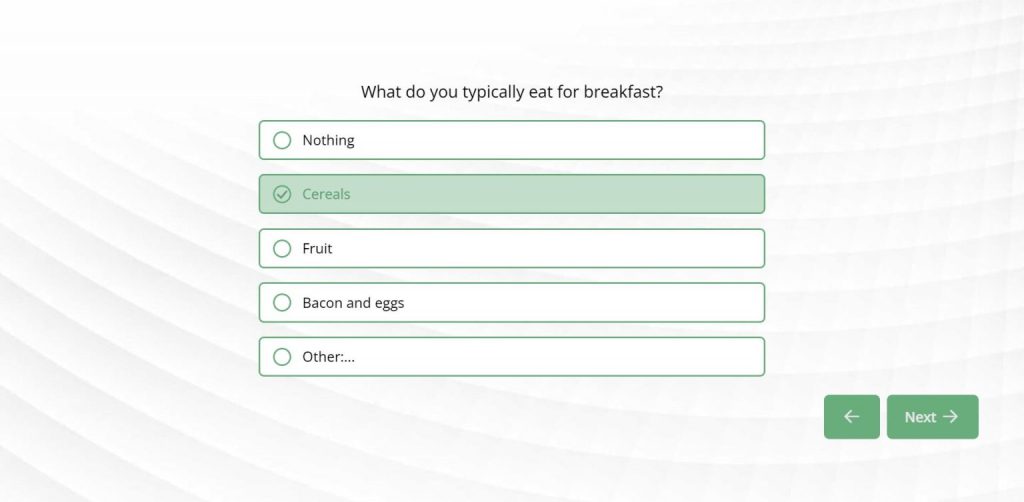
2. How many times a week do you exercise?

3. How many times a year do you get ill?
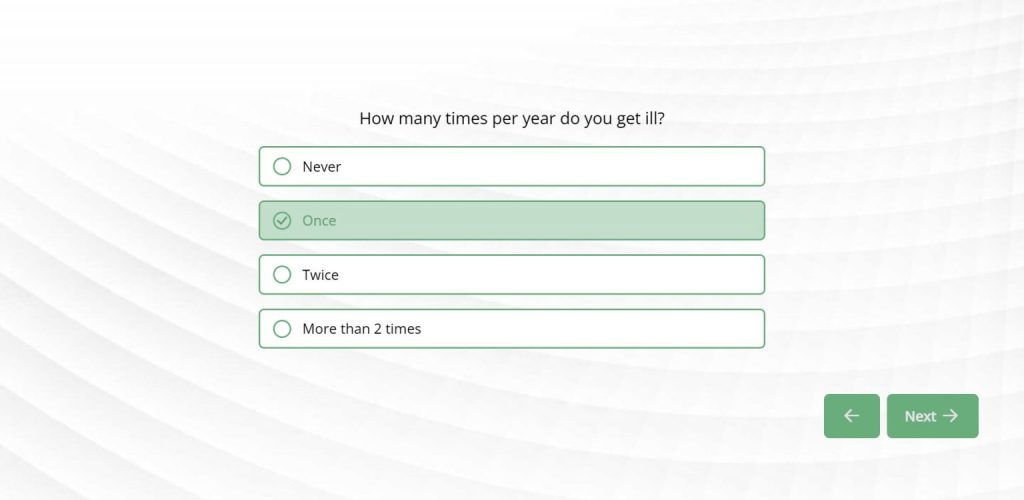
Ergonomy
4. How many hours a day do you spend staring at the computer screen?
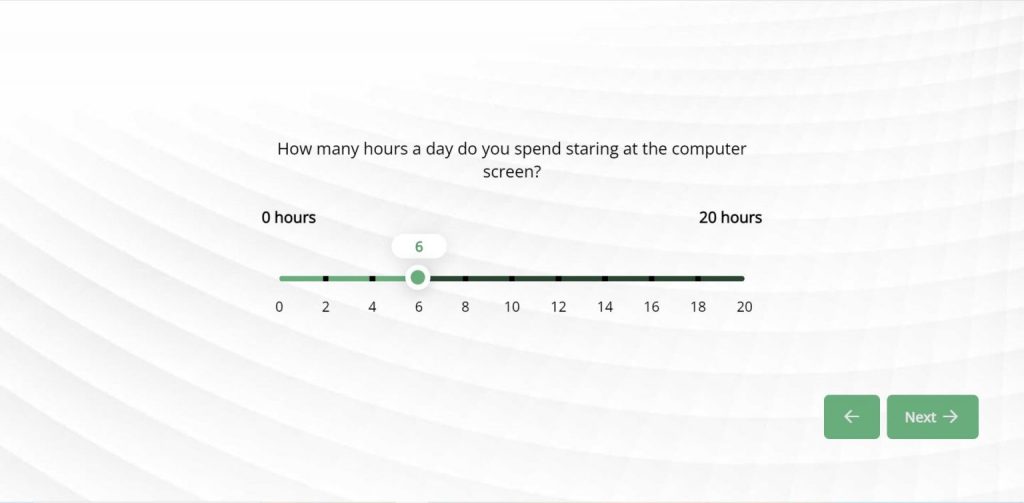
5. Are you comfortable with the setup of our office equipment?

Mental/Emotional
6. Which one of these three tasks makes you anxious?

7. On a scale of 1 to 10, how would you rate your mental health?
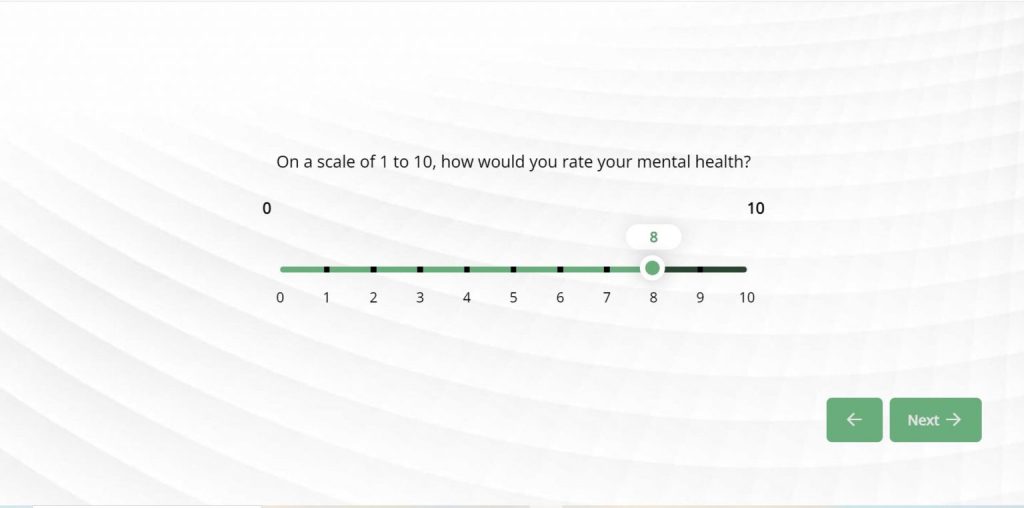
Team
8. Do you feel valued as a team member in your department?
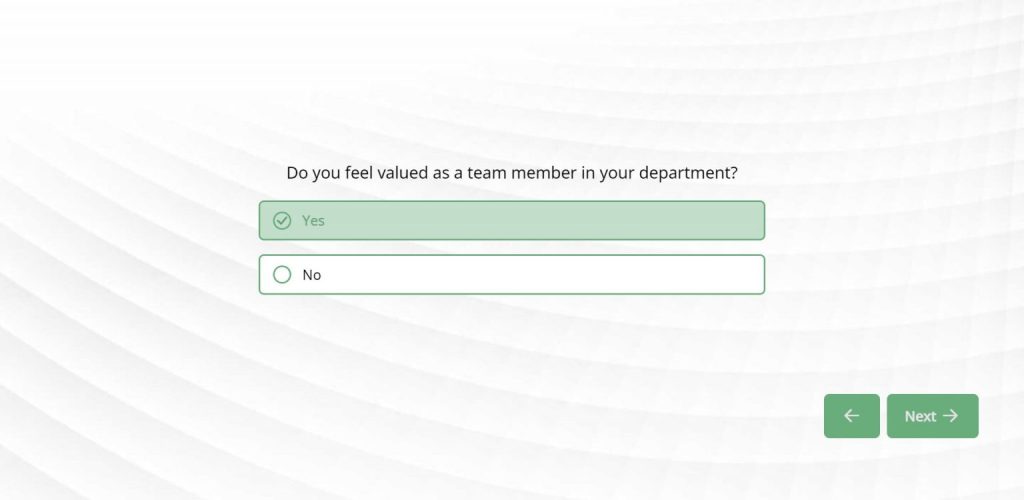
9. On a scale of 1 to 10, how would you rate how you get along with your workmates?

Social
10. Do you have time for social events in your spare time?
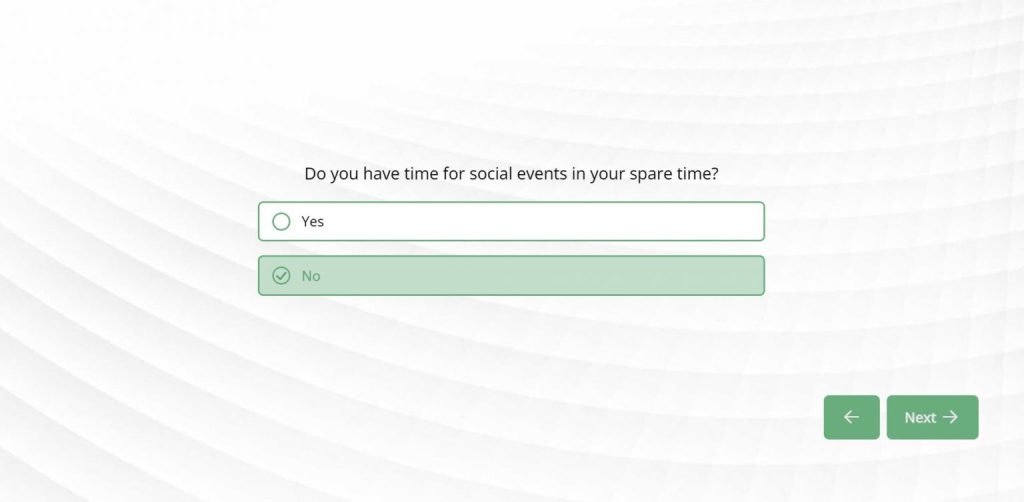
11. Do you feel work-related stress is negatively affecting your social life?
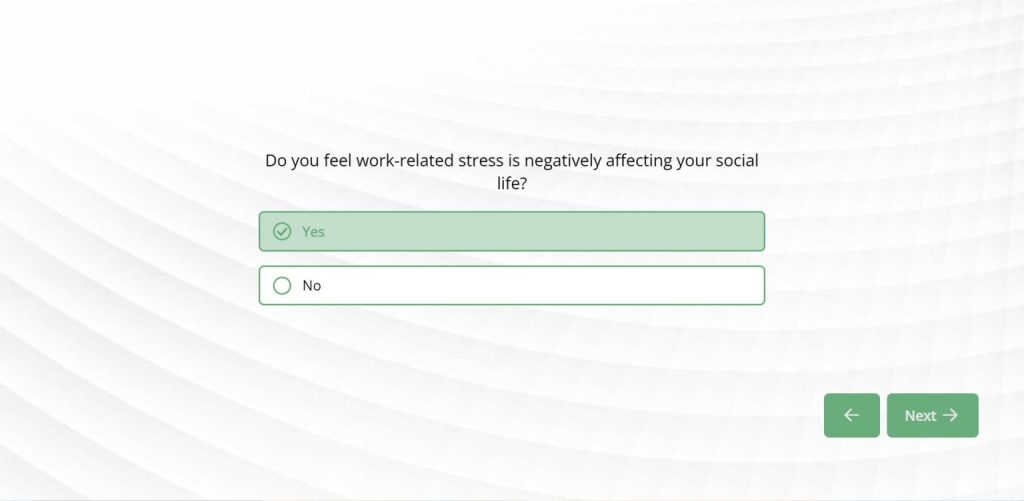
Flexibility
12. How comfortable are you handling unscheduled tasks?
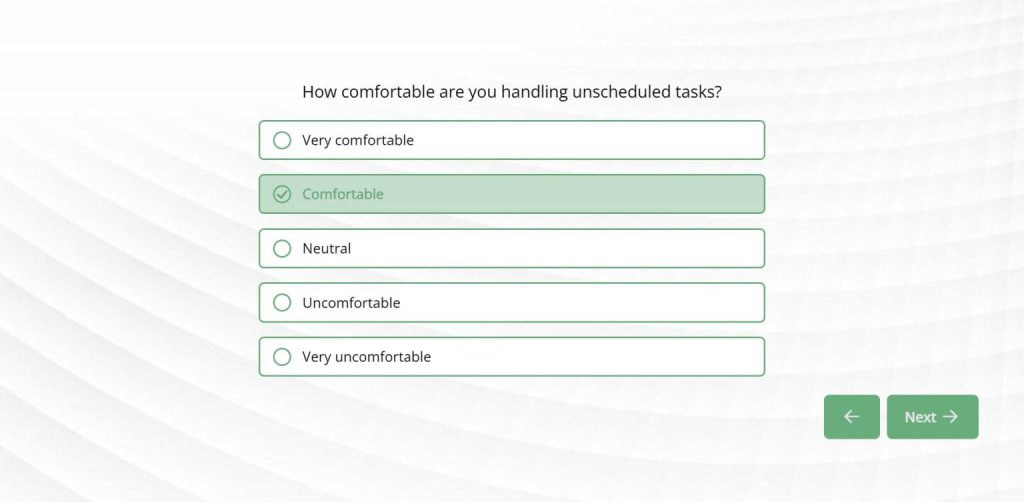
13. How does filing in for somebody in a different department make you feel?
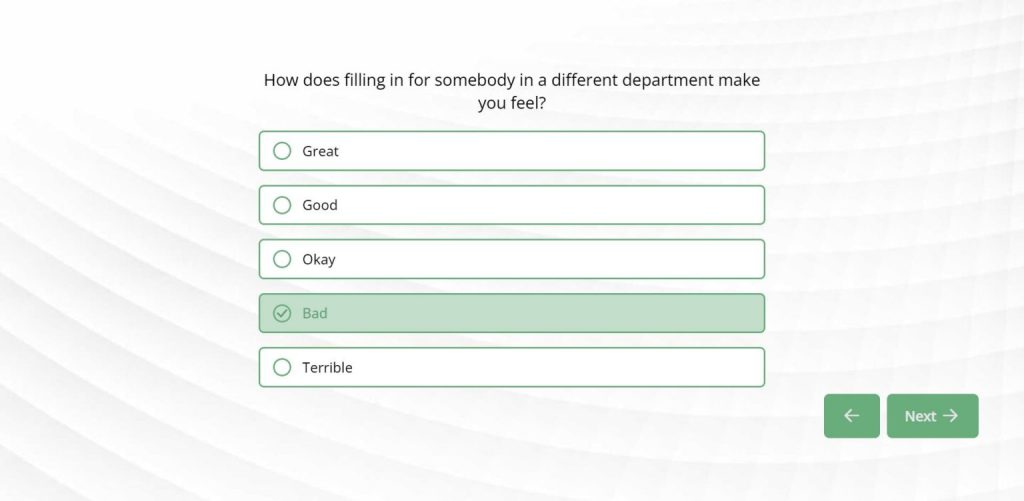
Resilience
14. I recover quickly from difficulties.
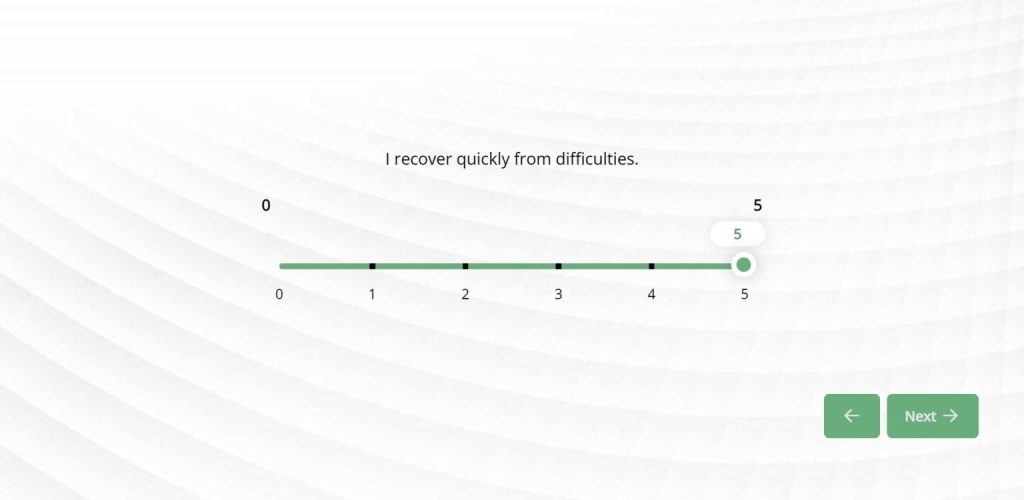
15. No matter how hard things become at work or at home, I’m always hopeful that I will get over the hump.
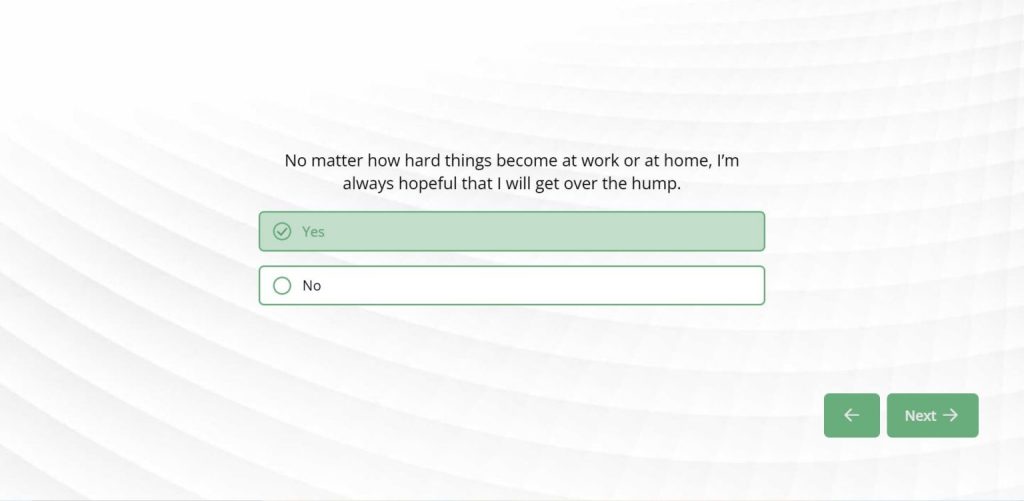
Tips on how to create a corporate wellness assessment
Designing an effective assessment is a matter of knowing what you want to find out (ask), assess the information you gather to finally come up with relevant and preferably immediately actionable advice.
More specifically, a corporate wellness assessment is based on the same principles. Here’s a crash course on how to do design it in 8 simple steps:
- Determine the goal of your corporate wellness assessment.
- Identify which dimensions of well-being you will focus on.
- Draft questions and possible answers.
- Come up with scoring criteria.
- Vary question types to understand issues deeply.
- Protect the privacy of employees at all costs.
- Summarize your findings and conclusions.
- Come up with personalized advice for your employees
Let’s say you run a construction company or serve a client in the dangerous, injury-prone construction industry and want to conduct a corporate wellness assessment. In this case, physical well-being and ergonomy will be critical dimensions to evaluate.
Based on the above illustrated situation, here are some question types and examples you can craft:
Polar question
1. Do you feel safe at work?
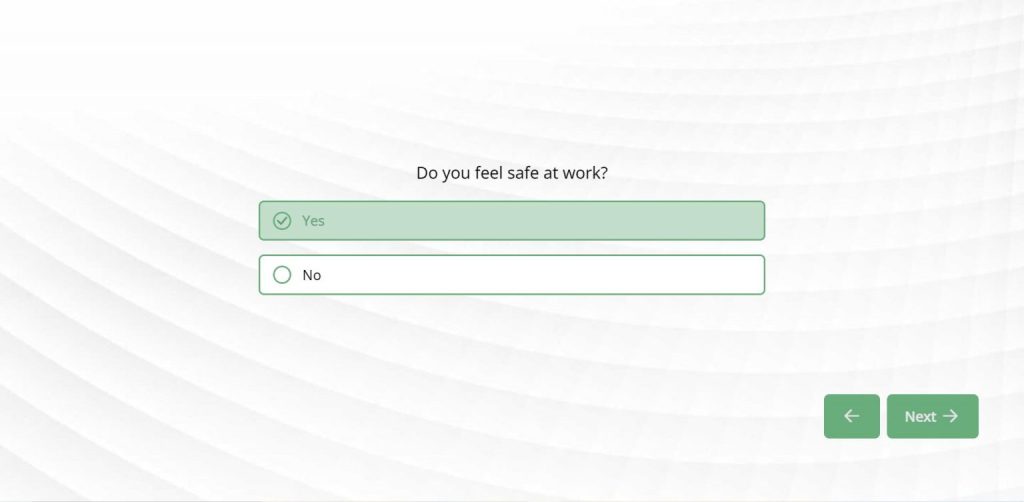
Text choice question
2. How many short breaks do you take while working on your computer?
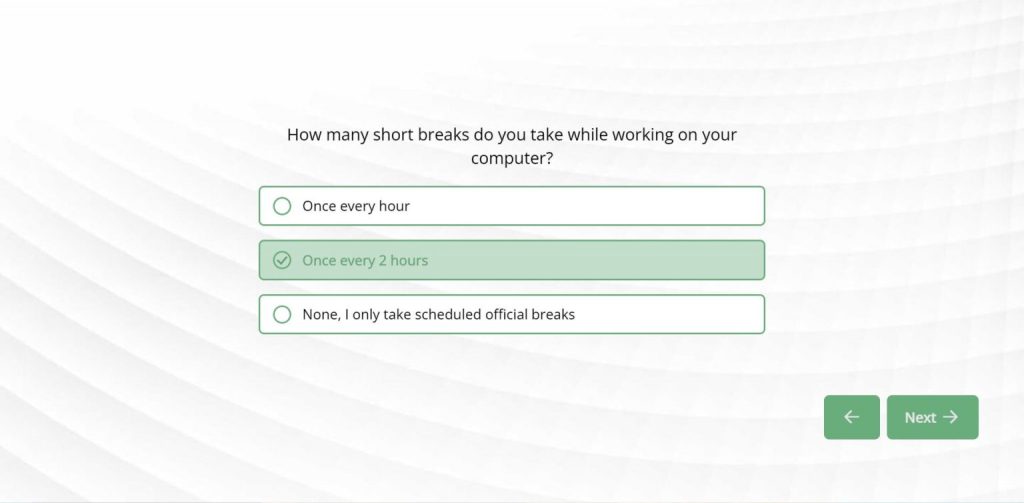
Checkbox question
3. Which of the 5 pieces of equipment is the most dangerous and can lead to injury? Select all that apply.
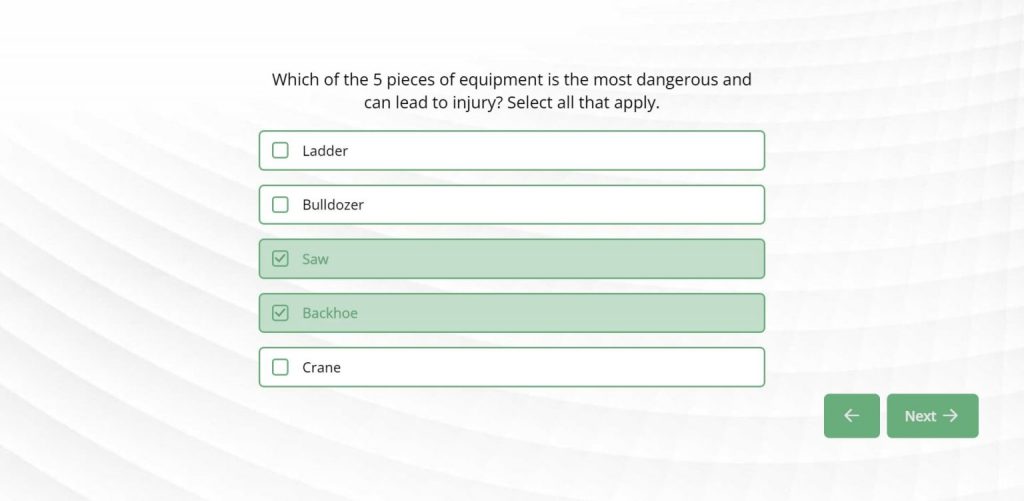
4. Which of the following items would significantly improve your workstation? Check all that apply.
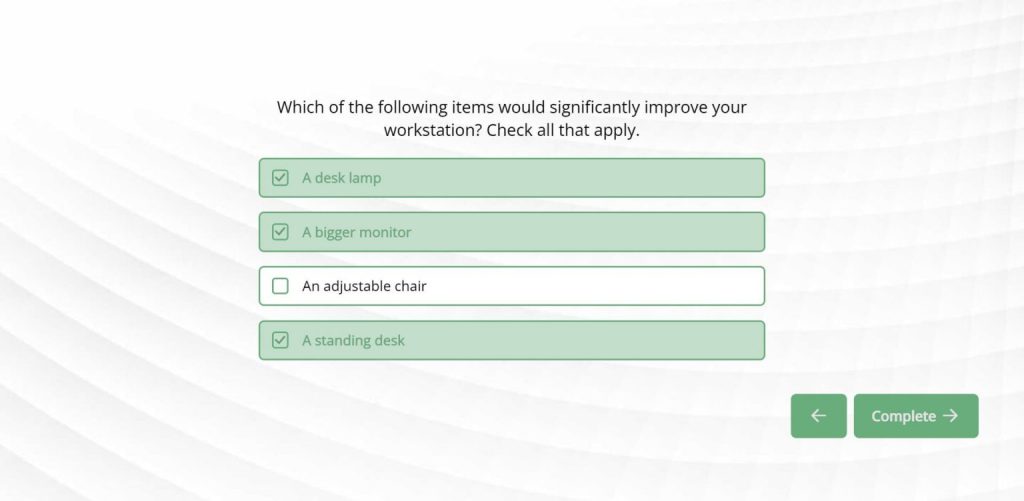
Slider question
5. On a scale of 1 to 10, how would you rate the safety of your working environment?
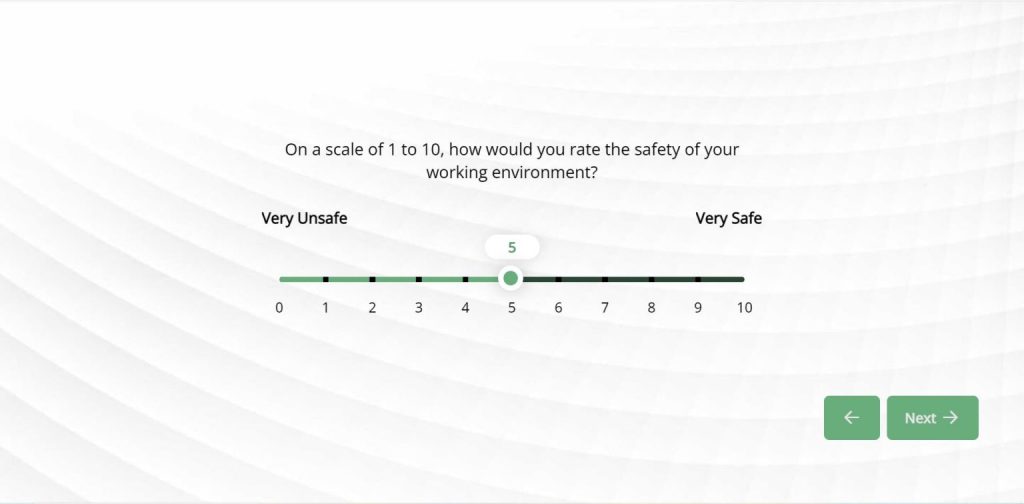
Corporate wellness report
Conducting an excellent wellness assessment isn’t enough. It’s half the job. For your wellness program to work, design actionable reports for all levels of your organization.
Employee-level
Reward your employees with a personalized report. They will love the helpful feedback.
Even more, they will love that you inform them about what they can do better for themselves. They’ll appreciate actionable takeaways like better planning, more/fewer meetings, going to a therapist, or having regular one-on-ones with management. In addition to these, you can also get a toll-free number in case your team needs to contact you quickly.
Here’s a real-life example of a wellness assessment report that shows the employee/respondent’s energy levels in a playful way. Moreover, this wellness assessment report has taken the scores of the other employees into account as well. This allows employees to compare their score to peers.
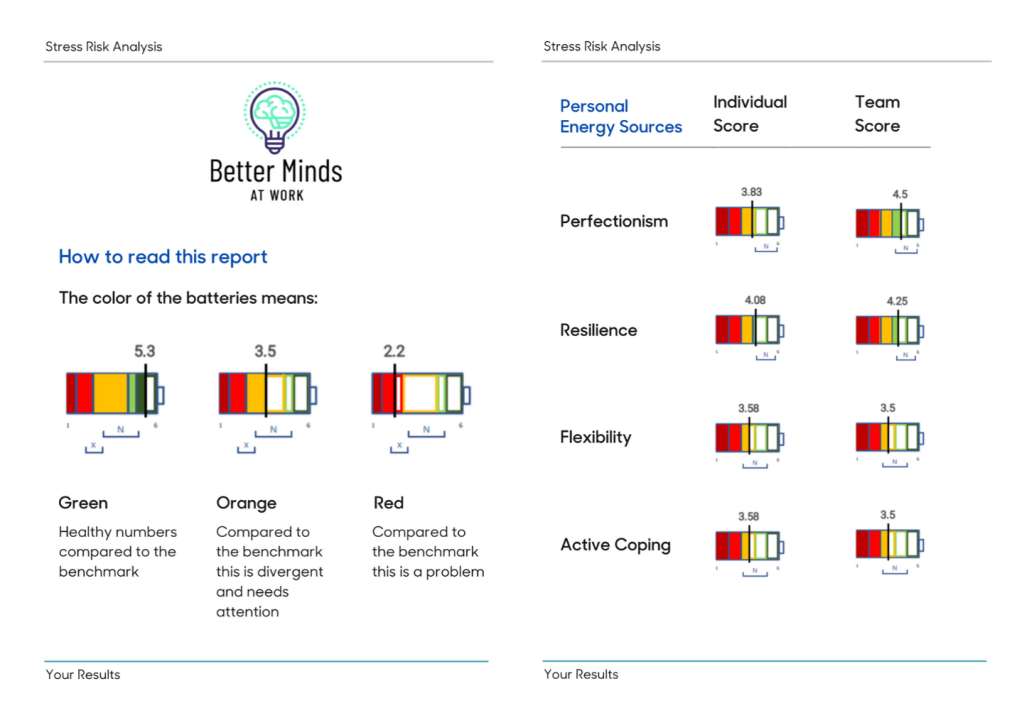
Team-level
Inform your employees about how they are performing as a team.
How is the communication? Are there any conflicts? How do they resolve any conflict that arises?
How about communication and relationships across departments?
Management-level
More importantly, you should use the assessment results to draw conclusions for your entire company.
Can you pick up on any patterns in the results? Are there common issues employees struggle with? What’s the number one issue to address?
And the big question—how will you help employees cope, overcome, or get better? Come up with solutions to improve the welfare of your employees and your work culture.
The wellness assessment report helps you identify opportunities for corporate wellness improvements. Should you:
- Organize team-building events?
- Add a coffee machine?
- Allow for (more) flexible working hours, remote work?
- Change the menu at the cafeteria?
- Allow family members at staff retreats?
- Schedule more walking breaks during long meetings?
- Introduce a personal development library?
- Invite a psychologist for monthly group/individual sessions?
Whatever solutions you think of, run them by your employees. Perhaps you can do a quick survey to hear their suggestions. It will boost morale and build a sense of ownership of the new measures. When people own a decision, they are more likely to commit to it to make it a success.
In strategic terms, think of PPI:
- Policies: What documented rule or guideline do you have to change or introduce to support the changes you want to make?
- Programs: What practical steps must you roll out to make your policies become a reality for your employees?
- Implements: What tools will you use to make all this happen?
Tips on how to create a corporate wellness assessment report
Here are quick tips on how to design a precise corporate employee wellness assessment report that’ll get people to act on your recommendations.
- Lead with a stunning branded cover page that draws people in.
- Give a high-level summary of the findings so people get the gist straightaway.
- Personalize your report by addressing participants by name, e.g. Anita’s Personal Wellness Report.
- Use a simple, easy-to-follow logical structure.
- Continue with the same style you used when doing the assessment.
- Format the report for easy readability: short sentences and paragraphs, and a good balance between text, visuals, and graphs.
- Include colorful charts and upscaled images to engage respondents, e.g. bar charts and pie charts.
- Use a conversational style throughout.
Want maximum productivity? Design a corporate wellness program.
Now you know how to assess corporate wellness.
The magnificent thing about a corporate wellness program is that it’s preventive. It spots potential serious health issues, nips them in the bud, and promotes a healthy lifestyle in every sphere of your employees’ lives. In the end, you’ll have healthy employees who enjoy their jobs.
Remember: A happy employee is a productive employee!

